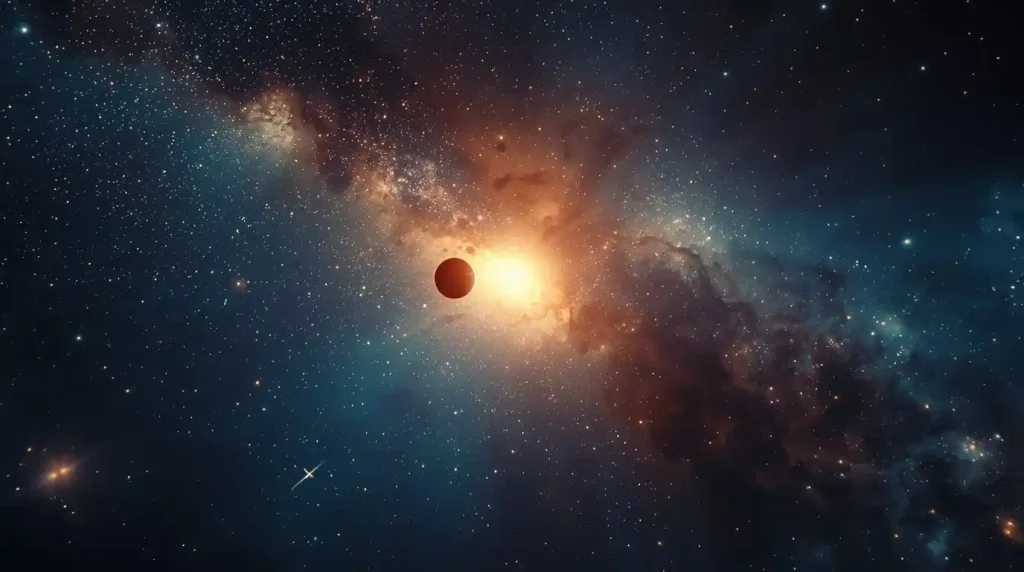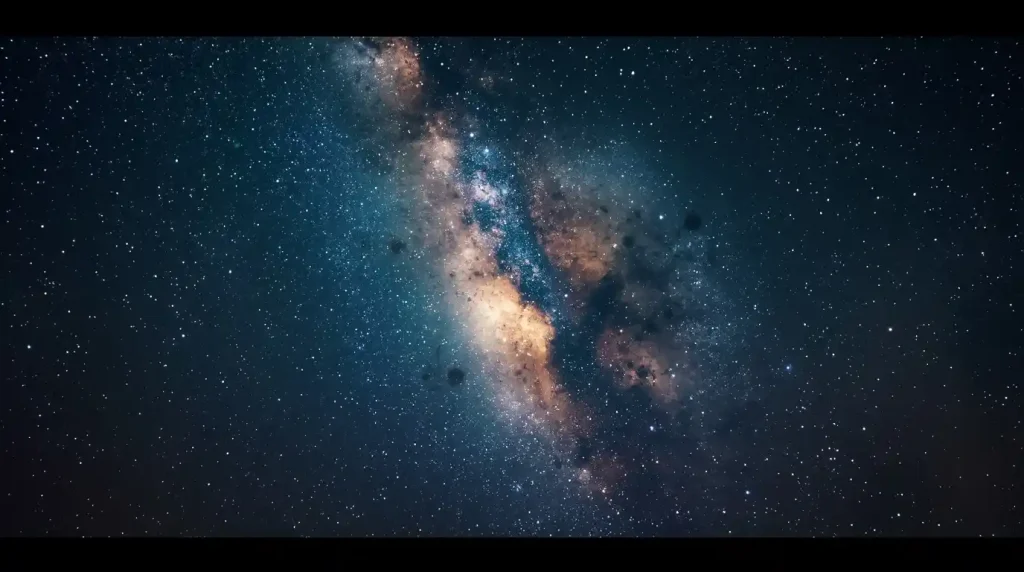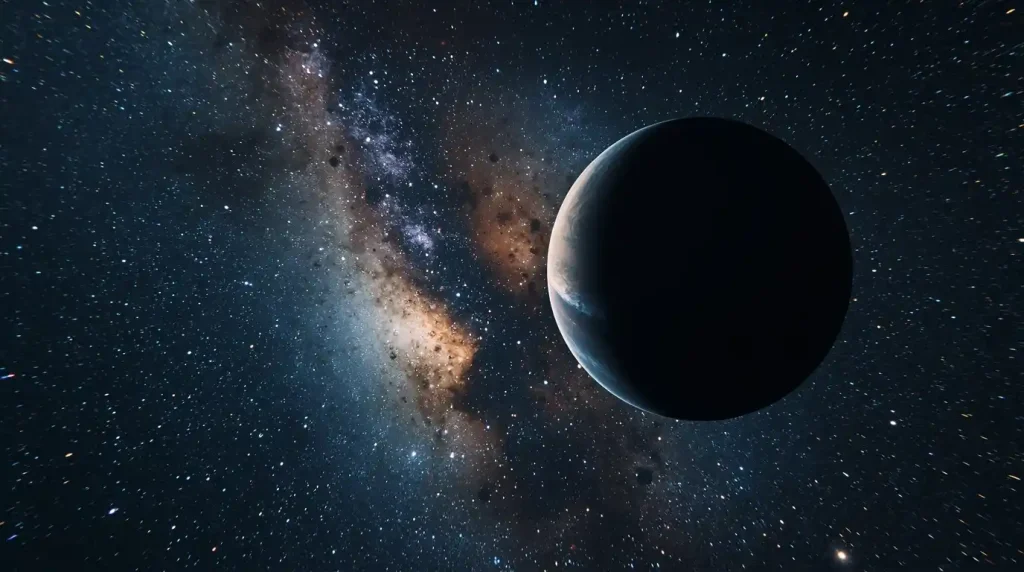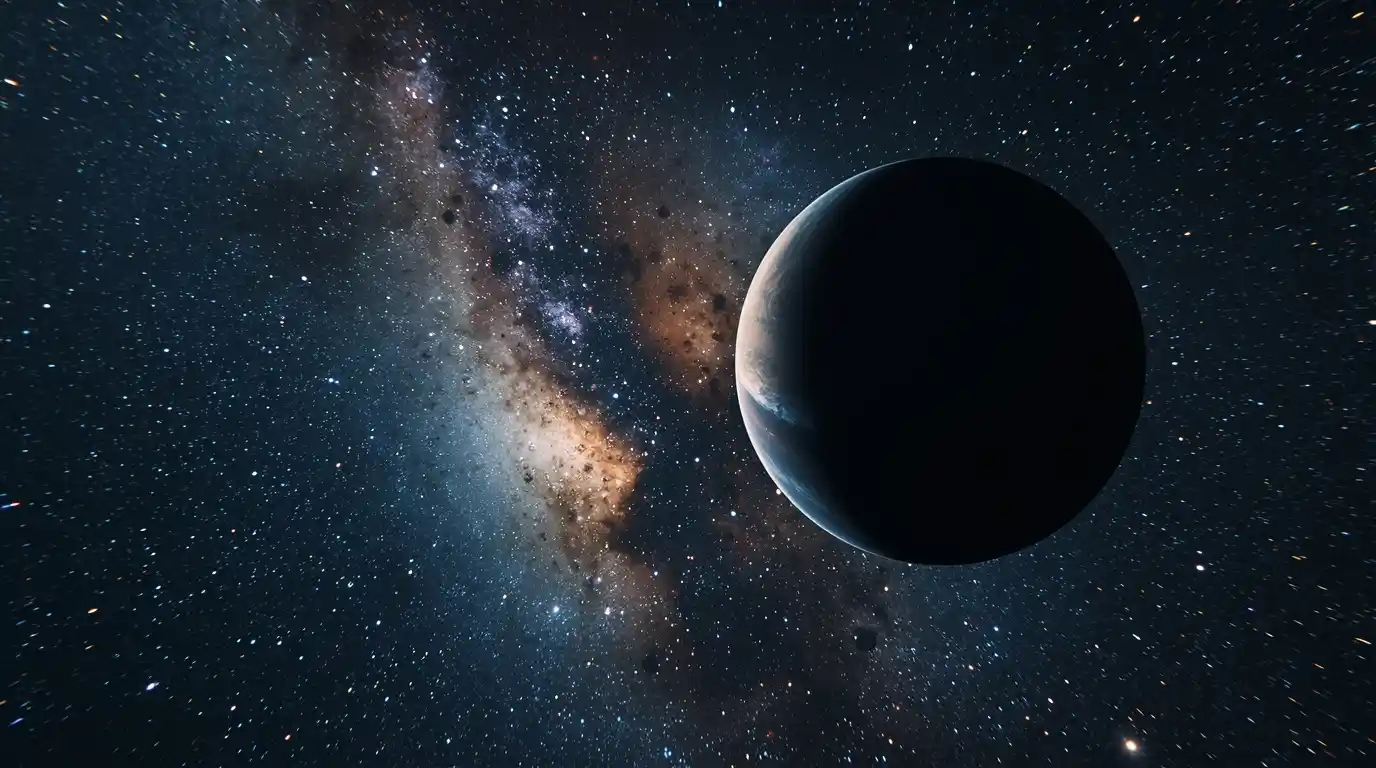Beyond a Pale Blue Dot: The Breathtaking Discovery of Gliese 12 b and the Search for Our Galactic Neighbors
For all of human history, gazing up at the starry canvas of the night sky has been an act of profound loneliness. We wondered if we were the universe’s sole audience to its own silent, magnificent spectacle. Were we truly alone? That ancient, haunting question has just received its most compelling answer yet. Astronomers have pinpointed a world, tantalizingly close by cosmic standards, that isn’t just another cold rock or a searing gas giant. It’s a planet orbiting in the “Goldilocks Zone” of its star—a region where conditions might be, as the fairy tale goes, “just right” for life as we know it. Its name is Gliese 12 b, and its discovery isn’t just another news headline; it’s a potential turning point in our understanding of our place in the cosmos. This isn’t science fiction. This is the real, breathtaking pursuit of a second Earth, and the timeline for answers is shockingly short.
A New World in Our Cosmic Backyard: Introducing Gliese 12 b
Let’s meet our new planetary neighbor. Gliese 12 b is an exoplanet—a planet outside our solar system—orbiting a cool red dwarf star called Gliese 12, located in the constellation Pisces. What makes this discovery so immediately staggering is its proximity. In the vast, unimaginable expanse of our galaxy, where distances are typically measured in thousands of light-years, Gliese 12 b is a mere 40 light-years away. To put that in perspective, if the Milky Way were the size of the entire continent of North America, the distance between Earth and Gliese 12 b would be less than the length of a city block. This cosmic closeness is the first reason this discovery is so revolutionary. It’s not a faint, blurry speck on the very edge of our observational capabilities. It’s close enough to be studied in intimate, unprecedented detail. Initial data, primarily from NASA’s TESS (Transiting Exoplanet Survey Satellite) and other ground-based observatories, suggests it’s a rocky world, a “super-Earth” or “sub-Neptune,” with a diameter perhaps only slightly larger than our own home planet. This is the foundational hope: a nearby, Earth-sized, rocky world. It’s the perfect candidate for the next step in humanity’s greatest quest.
The 7 Astounding Reasons Gliese 12 b Is a Prime Habitability Candidate
The universe is littered with planets, but most are utterly hostile to life. So what sets Gliese 12 b apart? It’s a confluence of several critical, and incredibly rare, factors.
1. The “Goldilocks Zone” Perfect Balance
The habitable zone, popularly known as the Goldilocks Zone, is the region around a star where it’s not too hot and not too cold for liquid water to potentially exist on a planet’s surface. Water is the universal solvent for life as we understand it; it’s the medium in which the complex chemistry of biology occurs. Gliese 12 b orbits squarely within this zone. Its year—one full orbit around its star—lasts just 12.8 Earth days. This incredibly short year is due to its proximity to its host star, but because Gliese 12 is a cool, small red dwarf, the planet receives a similar amount of stellar energy as Venus does from our Sun. This places its estimated surface temperature in a range that could, with a suitable atmosphere, support liquid water. It’s the first and most crucial box to check.
2. The Promise of a Stable, Rocky Foundation
Data from its transit (where the planet passes in front of its star, dimming the star’s light slightly) allows astronomers to measure its size. Gliese 12 b is estimated to be about 1.1 times the diameter of Earth. This strongly suggests a rocky composition, similar to Earth, Venus, or Mars. A rocky terrestrial planet is our only known model for a world that can host life on its surface. It provides a solid ground for oceans to pool, for continents to form, and for a geochemical cycle to potentially begin. This rules out it being a gaseous mini-Neptune, a type of planet believed to have crushing atmospheric pressures and no solid surface.

3. The Unprecedented Opportunity for Atmospheric Investigation
This is perhaps the most scientifically thrilling aspect. Gliese 12 b’s host star, Gliese 12, is a remarkably quiet and inactive red dwarf. This is a monumental piece of luck. Many red dwarfs are tempestuous, firing off frequent and powerful stellar flares—eruptions of radiation that would bathe any nearby planets in X-rays and ultraviolet light, likely stripping away their atmospheres and sterilizing their surfaces. Gliese 12, however, appears to be a calm, older stellar citizen. This tranquillity means that if Gliese 12 b did form an atmosphere billions of years ago, there’s a strong chance it has held onto it. A stable atmosphere is not just a prerequisite for life; it is a canvas upon which the biosignatures of life can be written and, crucially, detected by our telescopes.
4. The “Soon” Factor: A Timeline Measured in Years, Not Centuries
Unlike most exoplanet discoveries where follow-up study is a dream for future generations, the tools to analyze Gliese 12 b’s atmosphere are already online or will be within the year. The James Webb Space Telescope (JWST), humanity’s most powerful space observatory, is perfectly positioned to turn its gaze toward this world. Because the planet transits frequently (every 12.8 days), JWST can observe these events repeatedly. During a transit, starlight filters through the planet’s atmosphere (if it has one), and molecules within that atmosphere leave unique chemical fingerprints in the light spectrum. JWST is designed to read these fingerprints. Astronomers could potentially know within a few observation cycles whether Gliese 12 b possesses an atmosphere and what its primary chemical components are within the next 1-2 years. This immediacy transforms the discovery from an academic footnote into a live, unfolding cosmic drama.
5. The Key to Unlocking the Venus-Earth Paradox
Gliese 12 b occupies a fascinating middle ground in terms of the stellar energy it receives. It gets about 1.6 times more energy from its star than Earth does from the Sun, but about 85% of what Venus experiences. In our solar system, Venus is a hellish, runaway greenhouse world with crushing surface pressure and scorching temperatures, while Earth is a life-giving oasis. Why did these two roughly similar-sized planets end up so radically different? Gliese 12 b represents a missing link. By studying its atmosphere—or confirming its absence—scientists can test models of planetary evolution. Is it a temperate, Earth-like world? A barren rock that lost its atmosphere? Or a Venus-like hothouse? The answer will teach us invaluable lessons about what makes a planet habitable and how common such worlds might be.
6. A Beacon for the Future of Exoplanetology
The discovery methodology itself is a triumph. It was made using the transit method by NASA’s TESS mission, showcasing the power of this ongoing survey to find the most interesting targets for further study. Gliese 12 b is now the archetype, the perfect example of the kind of planet exoplanet hunters have been hoping to find for decades. It sets a new benchmark and provides a clear, high-value target that will guide the research focus of the astronomical community for the foreseeable future. It validates the technology and the strategy behind missions like TESS and JWST.
7. The Ultimate Question: A Home for Life?
Underpinning all this science is the profound human yearning to answer whether we are alone. If JWST were to detect an atmosphere on Gliese 12 b with intriguing chemical imbalances—such as the presence of oxygen, methane, carbon dioxide, and water vapor in combination—it would not be proof of life, but it would be a screamingly loud hint that something biologically interesting might be happening. It would become the most important world in the universe beyond our solar system, a priority for every future telescope and mission ever conceived. It represents the hope that life is not a cosmic accident unique to Earth, but a natural, and perhaps common, outcome of universal physical laws.

The James Webb Space Telescope: The Key to Unlocking the Secrets of Gliese 12 b
The discovery of Gliese 12 b is a triumph of modern astronomy, but it is the James Webb Space Telescope that holds the key to transforming this discovery from a statistical probability into a world with known characteristics. JWST, orbiting the Sun a million miles from Earth, is a technological marvel designed explicitly for this kind of investigation. Its massive 6.5-meter primary mirror is capable of gathering faint light from incredibly distant objects, and its suite of infrared instruments are perfectly tuned to analyze the chemical composition of exoplanet atmospheres. The process is elegant: as Gliese 12 b transits its star, a tiny fraction of the starlight passes through the planet’s atmospheric rim. Molecules in the atmosphere absorb specific wavelengths of this light. JWST’s spectrographs will capture the resulting spectrum, which will appear as a bar code of missing lines. Each family of molecules—water vapor (H₂O), carbon dioxide (CO₂), methane (CH₄), oxygen (O₂)—leaves a unique signature in this bar code. Deciphering this code will tell us not just if there’s an atmosphere, but what it’s made of. This is how we will move from “could be habitable” to “has the ingredients for habitability.” The telescope’s unprecedented sensitivity means it may require only a handful of transits to get a clear signal, putting us on the cusp of revolutionary answers.
The Two Futures: What Will JWST Find?
The astronomical community is abuzz with anticipation, and the theories about what JWST will see are essentially divided into three compelling scenarios.
Scenario 1: The Living World (Earth 2.0?)
In this most optimistic outcome, JWST detects a robust atmosphere with signs of water vapor and a mix of gases that suggest geological and potentially biological activity. Perhaps it finds a nitrogen-dominated atmosphere with oxygen and methane—a combination that, on Earth, is maintained by life. This would not constitute proof of life, as abiotic processes could potentially create similar signatures, but it would instantly catapult Gliese 12 b to the top of the list of places that might host life. It would trigger a frenzy of scientific planning for next-generation telescopes, like the planned Habitable Worlds Observatory, which would be designed to directly image the planet and look for surface features and clearer signs of a biosphere.
Scenario 2: The Barren Rock or Venus Twin
JWST may find no detectable atmosphere at all. This would suggest that the planet, despite being in the habitable zone, was either stripped bare by stellar radiation early in its history (even from a quiet star) or never managed to form a substantial one to begin with. It would be a airless, barren world. Alternatively, it could detect a thick, crushing atmosphere dominated by carbon dioxide, indicating a runaway greenhouse effect that turned the planet into a Venus-like inferno. While this would be disappointing for those hoping for life, it would be critically important science. It would provide a crucial data point for understanding the conditions that lead to a Venus outcome versus an Earth outcome, helping us refine our models of planetary evolution and the true boundaries of the habitable zone.
Scenario 3: The Intriguing, Mysterious World
The most likely initial result is something in between. JWST might confidently detect an atmosphere and clearly identify one or two primary molecules—say, carbon dioxide and water vapor—but the data might be incomplete or puzzling. It might suggest a thin atmosphere or one with a complex chemistry that requires more observation time to untangle. This would extend the mystery, providing enough evidence to keep excitement at a fever pitch while demanding more detailed study. It would show that the planet is a dynamic, complex world worthy of a decades-long research campaign.
The Ripple Effect: How This Discovery Changes Everything
The identification of Gliese 12 b is more than a single scientific paper; it is a cultural and philosophical event that sends ripples far beyond the field of astronomy.
For Science: It provides a perfect, nearby laboratory for testing our theories of planet formation and climate evolution. It is a tangible target that will drive the design of future space missions and ground-based telescopes for the next fifty years.
For Humanity: It makes the concept of a habitable world tangible. It’s no longer an abstract idea but a specific place with a name. It fuels the imagination of a new generation of scientists, engineers, and dreamers. It forces us to confront the profound question of whether life is a universal phenomenon. Finding a second habitable world would suggest the universe is teeming with life. Finding it to be barren would be a sobering reminder of how rare and precious Earth truly is.
For Our Future: While 40 light-years is impossibly far with current propulsion technology (a voyage would take hundreds of thousands of years), identifying a potentially habitable world so relatively close makes the long-term dream of interstellar exploration less abstract. It gives a potential destination. It sparks conversations about humanity’s ultimate future among the stars.
A New Chapter in the Human Story
The discovery of Gliese 12 b is a watershed moment. It represents the culmination of centuries of astronomical progress and the beginning of a new, transformative era: the era of atmospheric characterization of Earth-like worlds. We are no longer simply counting planets; we are now learning to read their stories. The next few years will be filled with a palpable sense of anticipation as the world’s most powerful telescope trains its eye on a faint star in the constellation Pisces, seeking answers to questions we have asked since we first looked up. Whether Gliese 12 b is a water world, a scorched desert, or something beyond our imagination, it is about to teach us something profound about the universe and our place within it. The search for life is no longer a fantasy. It is a live experiment, and the data is coming in soon.

Table of Contents
Reference Website:
https://edition.cnn.com/2025/09/18/science/exoplanet-possibly-habitable
Our Related News Website:
Sports: Sport Flash
World News: The News Grid
Environment News: Eco Alert
Business News: Biz Trend Now
Dailt News: Unbiased Daily
Realm News: Real Time Realm
Retrun to our Homepage
